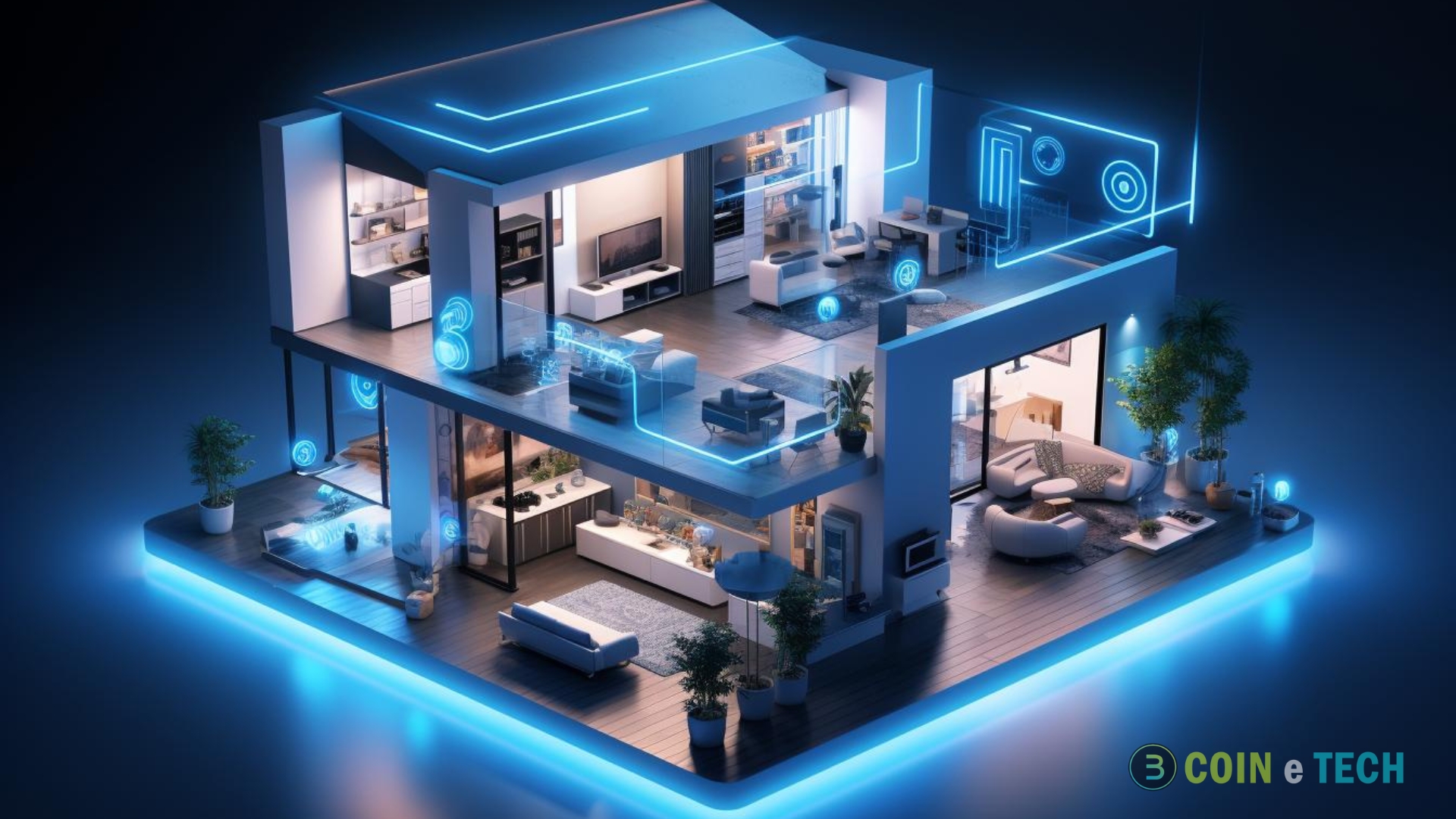The advent of smart homes has completely altered our lifestyles. Nowadays, it’s hard to imagine a house without some digital companion to help with chores. These futuristic houses include an app for your phone or tablet that lets you automate and control all appliances and gadgets. Connectivity and advancements in artificial intelligence have made it possible to “smarten” nearly every home component, including climate control, lighting, security, and entertainment. Learn all about smart homes, what they are, how they operate, where they came from, pros and cons, and more in this comprehensive guide.
What Is a Smart Home?
The term “smart home” can refer to configurations that allow for remote control of various appliances and gadgets using an app on any smart device. Through the Internet, homeowners can use the Internet in their homes, set alarms, and control important services from anywhere. Some purposes that might benefit from smart device enhancement and control are as follows:
- Security systems such as cameras, locks, and motion sensors.
- Smart lighting. All home lighting devices can be turned on, off, adjusted, and programmed remotely.
- Smart thermostats for controlling heating and air conditioning.
- Countless appliances like dishwashers, washing machines, dryers, ovens, refrigerators, and more can be connected.
- Entertainment systems such as smart TVs and speakers.
- Voice-activated virtual assistants like Amazon’s Alexa or Google Home.

You can set up automation routines and schedules for when devices are used and even utilize parental control to monitor how much time kids or anyone else spends using certain gadgets. To link these devices, you only need WiFi, BlWiFioth, or another communication protocol.
Thus, the most significant feature of a smart home is the ability to customize and safely monitor the homeowner’s control of all gadgets. Also, popular AI virtual assistants like Google Home and Alexa may help with everyday chores without screens or phones, improving the user experience, which many people require for convenience, efficiency, comfort, energy savings, and peace of mind.
Back to Origins
Although smart home ideas emerged in the 1970s, they didn’t gain significant traction until the early 2000s. A groundbreaking innovation occurred in 1975 when Pico Electronics, a Scottish company, developed the X10 communication protocol. This protocol allowed for controlling various home appliances and devices through an electrical network.
Because it relied on electrical wires to transfer signals, X10 had some technological restrictions, but that was not true of any breakthrough. Radio Shack introduced the TRASH range of home automation products, which included programmable timers, in 1978. Although the concept of a “smart home” was first proposed in the 1980s, widespread implementation of this technology remained a long way off.
Emerging in the 1990s as radio-frequency (RF) alternatives to electrical wiring, X10 was supplanted by protocols like CEBus and LonWorks. EHS was another such standard. However, it necessitated more gear to set up a wireless network, and this improved dependability. The first wireless home network, HomeRF, was released in 1999, paving the way for what is now known as a smart home.
The first smart televisions that could link to the internet were introduced Internet. Nest Labs, established by ex-Apple developers, released the original smart thermostat in 2010. New opportunities for voice control emerged in 2014 with the introduction of smart speakers equipped with virtual assistants such as Amazon’s Alexa.
The widespread availability of smartphones and tablets may have been a key factor in the meteoric rise of “smart homes” since they allowed for the remote management of various home appliances and transformed the once-futuristic idea into a reality for millions.
The Smart Home Ecosystem
What we call a “smart home” is much more of an ecosystem than a mere assortment of gadgets; it includes things like:
- Connectivity: Different devices and systems connect to the Internet using Wi-Fi prWiFis like WiFiInternetoth, Zigbee, and Z-Wave. This enables continuous bidirectional communication between them, with some devices acting as repeaters to expand network coverage.
- Hub or control centre: Hubs are essentially the central brains of the ecosystem. They receive information from different sensors and devices, process it, and send commands back for control. Advanced hubs like Hubitat, Samsung’s SmartThings, and Apple’s HomePod can execute rules and automation routines.
- Mobile applications allow users to configure and control the smart home remotely from their phone or tablet. Apps unify real-time control of all devices to simplify their use.
- Virtual assistants. These are the most beloved friends in our homes, or at least the most helpful. Any chosen virtual assistant, be it Alexa or Google Home, allows users to control their smart home through voice commands.
- Automation: The element that gives true “intelligence” is the ability to program devices to operate independently according to routines and schedules or activate automatically based on certain events, such as lights turning on upon detecting motion.
- Artificial intelligence: Technologies like machine learning and natural language processing analyze data collected from sensors and interactions to extract patterns, learn user behaviours, and make decisions to optimize the ecosystem’s operation.
- Interoperability: Compatibility between devices, apps, and systems is crucial to ensure seamless functioning, allowing communication between equipment from different manufacturers. The matter is a new standard aiming to address this challenge.
- Cloud: Smart homes cannot be discussed without mentioning the cloud, which provides remote storage and extra processing capacity to collect data from all devices, run advanced analytics, and train AI models to improve the ecosystem’s operation continuously.
When all these components work together perfectly, a typical house becomes a smart home where we can relax and unwind after a long day.
Smart Homes and AI
With the help of AI, smart homes can now operate and evolve with greater precision and capability, making them more useful to their owners. One of the most prominent uses is in voice-activated virtual assistants, such as Siri, Google Assistant, or Alexa from Amazon or Google. These assistants use natural language processing methods to understand user instructions and examine voice orders properly.
Another important use of AI is the ability to learn new things. Devices like Google’s Nest can pick up on habits and preferences by observing how owners engage with their smart thermostats over time. Subsequently, they optimize energy economy by automatically adjusting the temperature.
Computer vision and image recognition are becoming more integrated into security cameras and sensors. They can distinguish between people, pets, and invaders, spot unusual activity, and notify the proper authorities. As algorithms become more sophisticated and devices gain more local processing power, AI is anticipated to significantly alter the way we interact with our smart homes in the future.
Pros & Cons of Smart Homes
Smart homes bring numerous benefits, including the following:
- Increased comfort and convenience for residents.
- Energy and cost savings through automation.
- Enhanced security with the ability to monitor the home remotely.
- A richer and more interactive user experience.
- Assistance for individuals with reduced mobility, granting them more autonomy.
Meanwhile, there are also some drawbacks to consider:
- High implementation costs.
- Installation and configuration complexity.
- Privacy concerns regarding collected data.
- Potential cybersecurity risks.
- Dependence on internet connectivity.
- Lack of compatibility between devices and standards.
Conclusion
An innovative new technology called a “smart home” is changing how people live in their houses today. The ability to remotely control and automate many systems and equipment using apps and natural user interfaces, such as speech, is revolutionizing our daily lives by making us more comfortable and reducing energy use. Despite ongoing concerns about interoperability, prices, and insecurity, this cutting-edge technology has a bright future.








